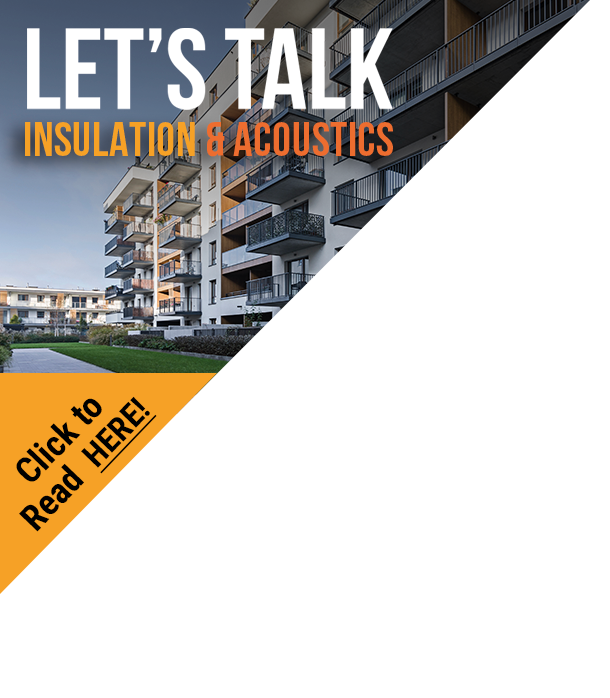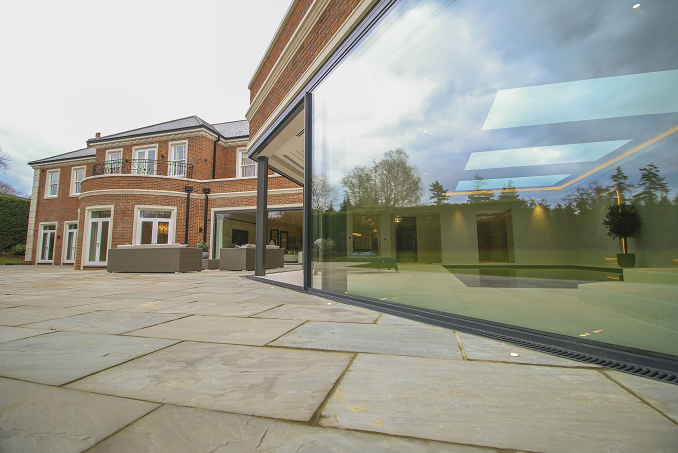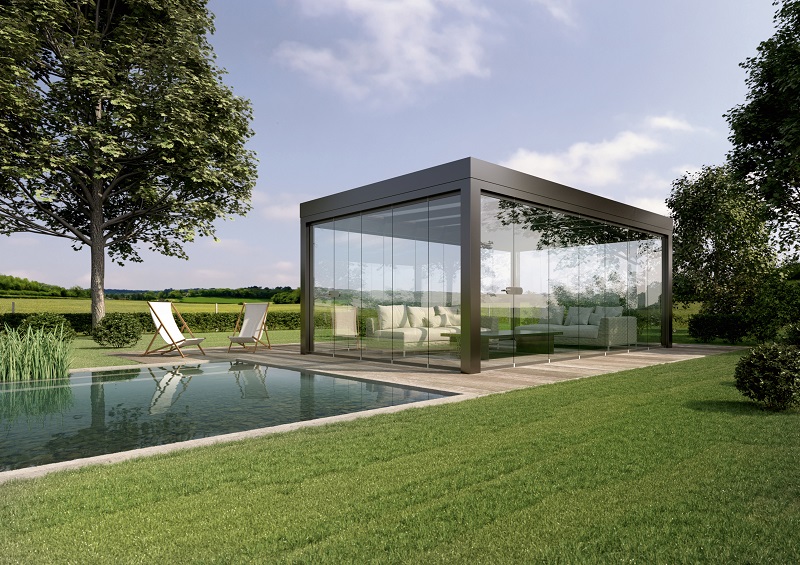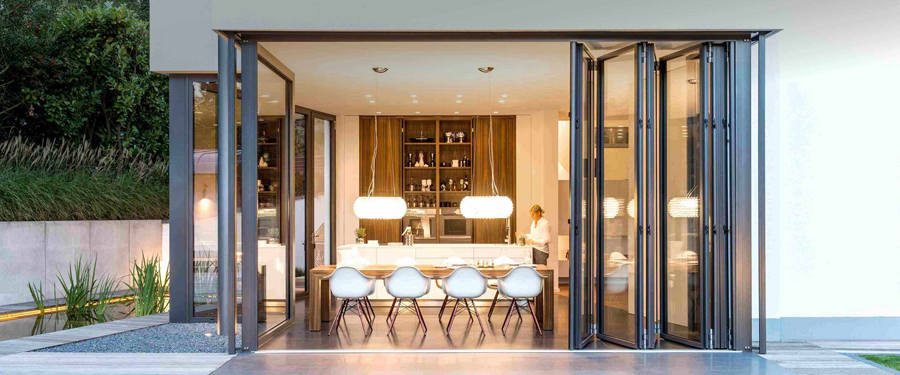
H1: How to prevent overheating in glass extensions: Expert tips from Solarlux UK
From glass canopies and verandas to wintergardens, bifolding doors and curtain walling, glazed extensions are widely used in UK architecture.
Glazed extensions bring many functional and aesthetic advantages to a property. They connect indoor and outdoor spaces, maximise natural light and enhance the sense of space and openness. However, large areas of glazing can also raise the risk of overheating if they are not carefully planned. To reduce the chance of overheating, appropriate design and specifications should be implemented. This will also improve occupant comfort throughout the year and support compliance with the building regulations.
H2: What’s the problem with overheating?
A recent study from the Met Office[1] has detailed how extreme temperatures are increasingly likely. Dr Gillian Kay, a senior scientist and lead author, explains that the chance of temperatures exceeding 40°C has been rapidly increasing: “It is now over 20 times more likely than it was in the 1960s,” she says. “We also found that temperatures several degrees higher than we saw in July 2022 [when there was a record heatwave] are possible in today’s climate,” she adds.
With UK summers becoming warmer, architects and designers are rethinking what it means to create a thermally comfortable building. In the past, the focus was on retaining heat, but now there needs to be a balance between keeping buildings warm in winter and preventing overheating in summer.
In 2022, the Climate Change Committee (CCC) warned that overheating was impacting the UK’s existing building stock, particularly in London and the south of England. The CCC’s report, ‘Risks to health, wellbeing and productivity in buildings’, indicated that 20% of UK dwellings experience summer overheating. It also highlighted that flats and apartments are at greater risk (30%) compared to houses (12%)[2].
These findings show that overheating is already a significant issue for homes in the UK. Without appropriate design measures and refurbishment strategies, the risk of overheating is likely to increase as climate change continues to influence weather patterns.
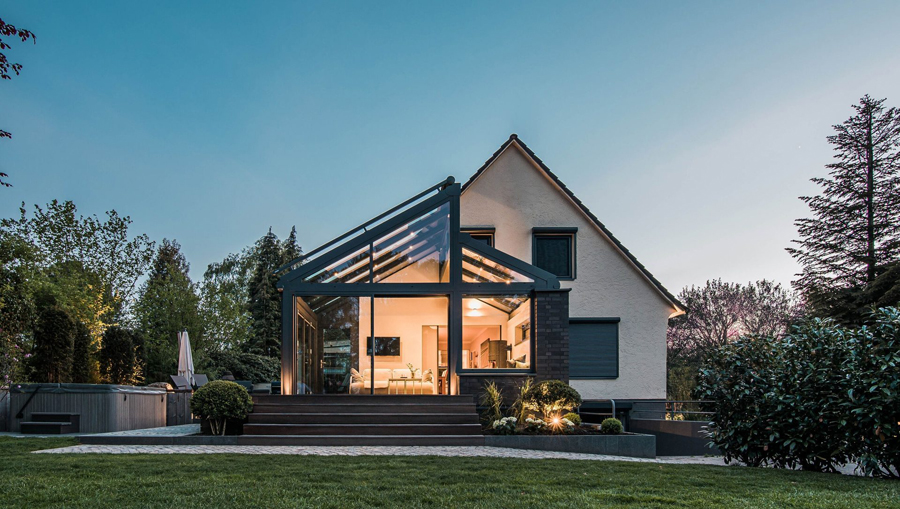
H2: The balancing act between thermal efficiency and overheating
The problem of overheating can be partly attributed to the high levels of thermal efficiency that the building regulations require. Approved Document L and the upcoming Future Homes and Buildings Standards have set stringent requirements for U-values, insulation and airtightness. Although thermal efficiency helps occupants keep warm in cold weather, it may also trap heat inside on hot days, making it difficult to cool down the interior during a summer heatwave.
Insulation and airtightness aren’t the only culprits. Large glazing features can also contribute to increased interior temperatures. Without appropriate design measures, solar heat transmittance may increase indoor temperatures by several degrees.
However, glazed structures don’t have to suffer from overheating. With the right design and specification, a glazed extension can maintain thermal comfort throughout the year, while also providing an attractive addition to the home and garden.
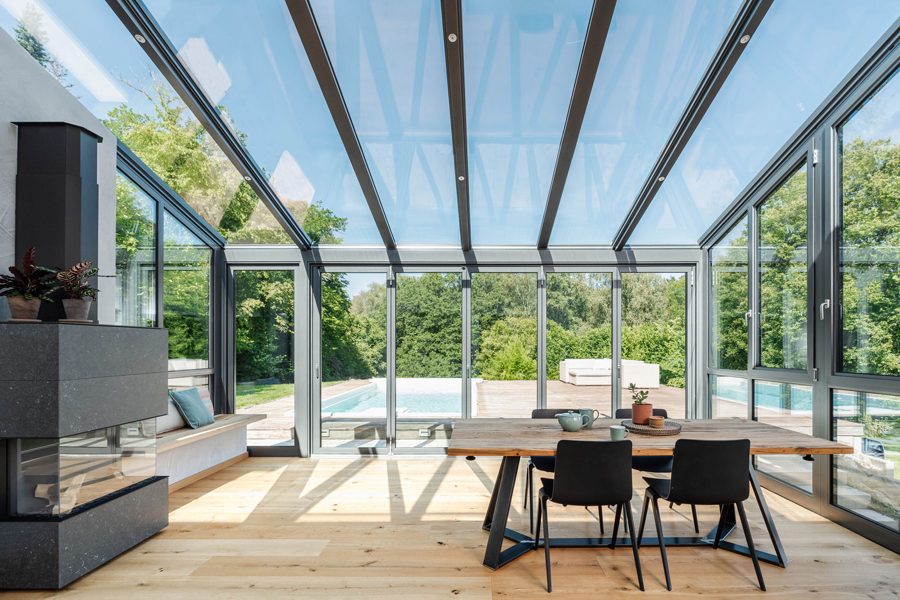
H2: Minimising solar gain in glazing to avoid overheating
Preventing overheating in glazed extensions requires careful design and specification. The following strategies can help to reduce solar heat gain and heat retention in glass rooms:
- Use low-G glazing:The G-value (solar heat gain coefficient) is a measurement of how much solar energy passes through a piece of glass. Low-G glass has a microscopically thin, transparent coating that reflects a portion of solar energy. This reduces solar gain while maintaining natural light levels.
- Integrate passive solar control: By preventing sunlight from reaching the glass, external shading structures such as pergolas, overhangs and louvres help reduce solar gain.
- Include natural ventilation: Approved Document F requires ventilation to maintain indoor air quality and moisture control. Sliding doors, windows, trickle vents and mechanical extraction allow warm, moist air to be expelled and can also provide a cooling effect.
- Take a holistic approach: The orientation of glazing relative to the sun must be considered to manage solar gain. South-facing glazing will receive higher levels of direct sunlight than north-facing glazing. Nearby buildings, trees and hills may also provide shading, depending on their position.
- Apply early-stage thermal modelling: Dynamic simulation modelling software helps architects and designers assess potential overheating risks and compare the performance of different glazing options before designs are finalised.
- Refer to Approved Document O: Introduced in December 2021, Part O of the Building Regulations (England) addresses overheating in residential buildings. It sets requirements for limiting unwanted solar gain and providing adequate means to remove excess heat from the indoor environment.
- Get expert advice: Discussing project requirements and challenges with a glazing specialist can help you understand product options and how the glazed structure can be designed to prevent overheating.
“While aesthetics are important, designing glazed features, such as wintergardens and bifolding doors, is also about creating a comfortable living environment,” explains Jeevan Matharu, Marketing Manager at Solarlux UK. “By considering factors such as orientation, shading and glass specification, large glazing can be included in a project while minimising the risk of overheating,” she adds.
H2: Will a glazed extension be too hot or cold?
A well-designed glazed extension can maintain a stable temperature throughout the year. Careful consideration of its location and orientation, as well as the construction method and type of glass used, will support year-round thermal comfort.
Solarlux wintergardens are engineered to ensure thermal comfort, as well as quality and aesthetics. Our glass structures can include low-G glass, triple glazing, ventilation, shading, bifolding doors, sliding doors, heating, lighting and automation. Combined, these elements enhance the thermal comfort and enjoyment of the enclosed space, whatever the weather.
At Westlands Farmhouse in Wiltshire, for example, Solarlux cero III was used to update an outdated conservatory on a heritage property. This precision-engineered sliding door system included an open corner design, as well as triple glazing and thermally efficient glass.
“We provided a premium system that made the most of the property’s expansive views and historic character, while also ensuring exceptional thermal performance and effective control of natural light,” explains Jeevan. “It helped to stabilise the indoor temperature and prevent overheating. The result was an inviting space that balanced light, ventilation and thermal comfort.”
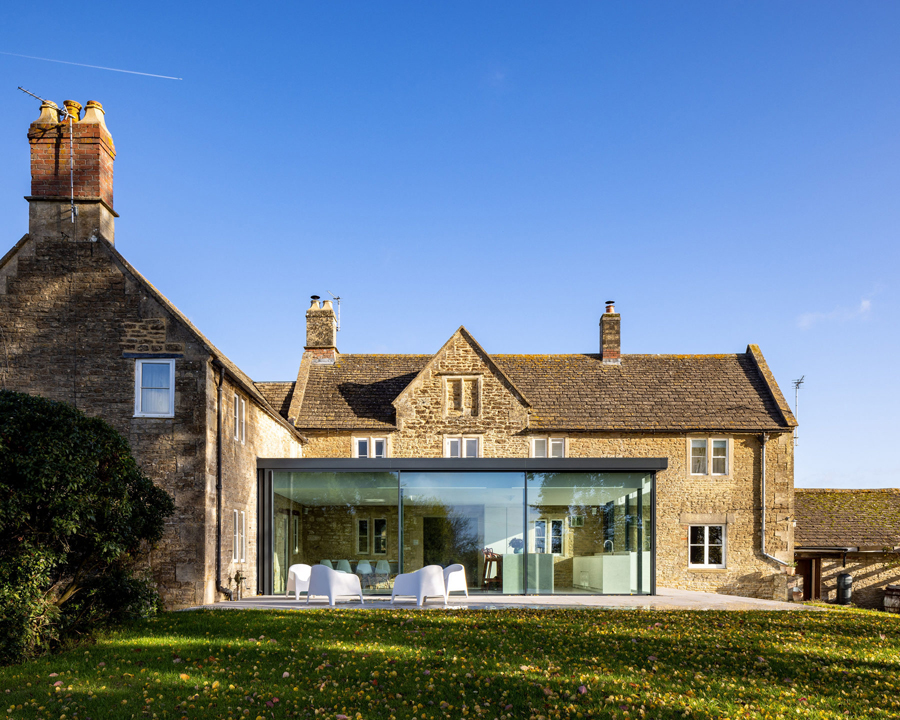
H2: Overheating prevention: What to consider when specifying large glazing
To combat overheating when specifying glazing, here’s a checklist for avoiding some of the most common pitfalls:
- Check the orientation of the glazing and its exposure to direct sunlight
- Specify Solar control glazing
- Consider external shading strategies
- Ensure adequate ventilation for cooling and moisture control
- Carry out thermal modelling
- Ensure compliance with Approved Documents L, F and O
H2: Glazed extension temperature control and Solarlux UK glazing solutions
With careful planning and design, the challenges of overheating in glass extensions can be overcome. By combining solar control glazing, ventilation and shading alongside thermal modelling, glass features can feel bright, airy and inviting – whatever the season.
“At Solarlux, our glazing systems are designed with aesthetics, comfort and performance in mind. By working with our specialist partners early in the planning process, architects and homeowners can achieve a perfect balance of light and thermal efficiency,” says Jeevan.
She adds, “A glazed extension can be a strong alternative to a traditional brick extension. When considering budget and speed of build, glazed structures can be more cost-effective and faster. With the right specification, they can provide reliable thermal performance, while also offering the benefits of natural light and connection to the outdoors.”
If you’re planning a glass extension or other glazed feature, explore the Solarlux range,including cero sliding doors, bifolding doors and wintergardens – or get in touch with our team for expert guidance.
[1] Source: https://www.metoffice.gov.uk/about-us/news-and-media/media-centre/weather-and-climate-news/2025/met-office-report-details-rising-likelihood-of-uk-hot-days
[2] Source: https://www.theccc.org.uk/wp-content/uploads/2022/07/Risks-to-health-wellbeing-and-productivity-from-overheating-in-buildings.pdf
